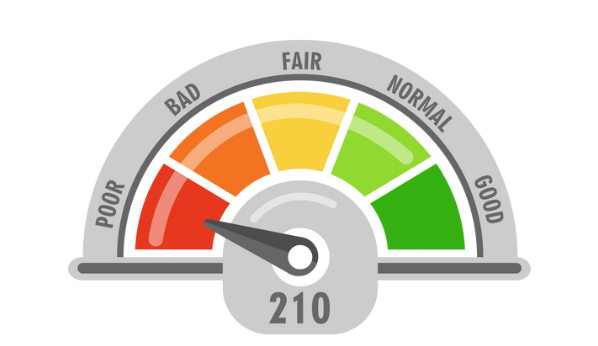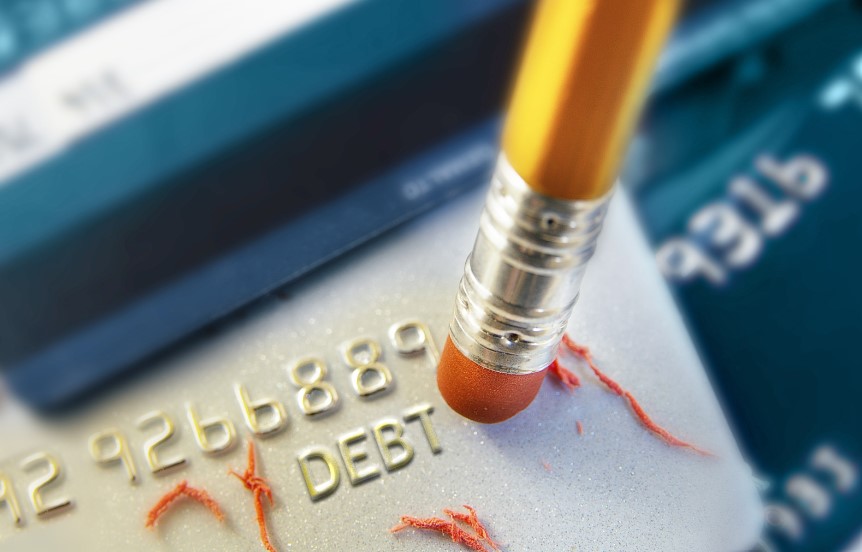
How to Remove a Charge-Off Without Paying: Step-by-Step Guide
Curious about how to remove a charge-off without paying? You might think it's impossible, but it's not. In fact, with the right approach and understanding of the legal process, it can be done. Let me show you how.
Dealing with a charge-off on your credit report can be intimidating, especially when it’s dragging down your credit score. A charge-off is a serious negative mark that can make it difficult to qualify for loans, credit cards, or even rental applications.
The good news? You can remove a charge-off without paying it off. With over 17 years in the credit repair industry, I’ve helped many people successfully navigate this process and restore their credit.
In this complete guide, I’ll share the proven strategies I’ve used to help clients remove charge-offs from their credit reports—without paying the outstanding debt.
Whether you're looking to improve your credit score or just want a clearer understanding of how the process works, you’re in the right place.
What Is a Charge-Off?

A charge-off happens when a creditor decides they’re unlikely to collect the amount you owe. Usually, this occurs after six months of missed payments. Rather than continuing to chase you for the debt, they write it off as a loss. However, this doesn’t mean the debt disappears. The creditor may still sell it to a collection agency or take legal action.
Once a charge-off hits your credit report, it can stay there for up to seven years, significantly damaging your credit score.
How Does a Charge-Off Affect Your Credit?

A charge-off can significantly damage your credit score—potentially lowering it by up to 100 points or more. Since charge-offs indicate that you were unable to repay your debt, they are considered major red flags for future lenders. Here’s how it impacts your financial opportunities:
Credit score drop: Charge-offs can lower your credit score, making it difficult to qualify for new credit lines, loans, or even an apartment lease.
Lender perception: Lenders and creditors view a charge-off as a sign of financial irresponsibility. This can result in higher interest rates, denied loan applications, or difficulty obtaining approval for credit in the future.
Job prospects: In some cases, employers might look at your credit report, and a charge-off could hurt your chances of landing certain jobs.
Even though the charge-off stays on your credit report for up to seven years, its effect will diminish over time, especially if you take steps to improve your credit during that period.
What If You Never Pay a Charge-Off?

While this guide focuses on removing a charge-off without paying, it’s important to address whether paying the charge-off can still be beneficial. Paying off the charge-off won’t automatically remove it from your credit report, but it can still help you in the long run:
Settling the debt shows responsibility: Paying off the debt, even partially, shows creditors and lenders that you’re taking responsibility. This could improve your chances of approval for future loans or credit cards.
Prevents further negative actions: Paying off the debt can stop creditors or collection agencies from taking additional legal steps, like suing you or garnishing your wages.
On the other hand, there are still some debate about whether you should pay a charge-off.
Why You Should Never Pay a Charge-Off
Paying a charge-off might seem like the right thing to do, but it doesn’t always benefit your credit score. Here’s why:
Minimal Impact on Credit: Experts show there’s just a little credit score increase after charge off removed. Is that true? At some point, because once an account is marked as a charge-off, paying it won't remove the negative mark from your credit report. It will still remain for up to seven years, even if the debt is paid.
Better Alternatives: Instead of paying, consider negotiating a "pay-for-delete" agreement or disputing inaccuracies, which can lead to full removal of the charge-off.
Potential Legal Leverage: In some cases, paying could restart the statute of limitations, making the debt legally collectible again. It’s often wiser to explore removal strategies without paying.
How to Remove a Charge-Off Without Paying

Now, let’s talk about how to remove a charge-off without paying it. While there’s no foolproof method, there are a few strategies you can try. The key is to stay persistent and patient.
1. Dispute Inaccurate Information
The first step is to dispute the charge-off with the credit bureaus. If there’s any error in how the charge-off is reported (like the amount, dates, or creditor’s name), you have the right to dispute it. Errors can sometimes lead to the complete removal of the charge-off.
Here’s how to do it:
Get a copy of your credit report: You can request a free copy from the three major credit bureaus—Equifax, Experian, and TransUnion—once a year.
Look for inaccuracies: Check the charge-off details thoroughly. Even a small mistake like a wrong date could be grounds for a dispute.
Submit your dispute: Each credit bureau allows you to dispute errors online, by mail, or over the phone. Once you file your dispute, the credit bureau has 30 days to investigate.
Pro Tip: Keep all communication in writing. This will give you proof if you need to escalate the issue later.
2. Negotiate a “Pay-for-Delete” Agreement
A pay-for-delete is when a creditor agrees to remove the charge-off from your credit report if you settle or pay the debt. Technically, this goes against credit reporting rules, but many creditors are willing to do it as a last resort.
Here’s how to approach it:
Contact the original creditor: Explain that you want to settle the debt and ask if they’re willing to remove the charge-off in exchange for payment.
Get it in writing: If the creditor agrees, make sure you get everything in writing before making any payments. This protects you in case they go back on their word.
Negotiate the amount: You can often negotiate to pay less than the full amount owed.
Even though this involves payment, it's a way to remove the charge-off, giving you a cleaner credit report.
3. Send a Goodwill Letter
Another tactic is to send a goodwill letter to the creditor. In a goodwill letter, you ask the creditor to remove the charge-off from your credit report as a gesture of goodwill. This approach works best if you’ve already paid off the debt or if the charge-off was the result of financial hardship (like a job loss or medical emergency).
Here’s how to write a goodwill letter:
Be polite and explain your situation: Mention the reason why you missed payments and explain what steps you’ve taken to get back on track.
Highlight your good history: If you’ve had a positive history with the creditor before or after the charge-off, mention it.
Request removal: Politely ask the creditor to remove the charge-off as a one-time favor.
While there’s no guarantee this will work, creditors often grant goodwill adjustments if you’re in good standing.
What is the best letter to remove a charge-off?
Well it depends on what charge-off you want to remove. However, the best letter to remove a charge-off is either a "Goodwill Removal Letter" or a "Dispute Letter."
Goodwill Removal Letter: If you’ve already paid off the debt or have a strong payment history, this letter politely requests the creditor to remove the charge-off as a gesture of goodwill, often based on circumstances like financial hardship.
Dispute Letter: If there are inaccuracies in the charge-off (such as incorrect amounts or dates), send a dispute letter to the credit bureaus. They are required to investigate and, if the information is incorrect, the charge-off may be removed.
Each letter should be professional, concise, and include relevant account information.
4. Wait for It to Age Off
If the other methods don’t work, you may just need to wait for the charge-off to age off your credit report. Charge-offs typically remain on your report for seven years from the date of the first missed payment.
Here’s how to handle the wait:
Focus on building positive credit: While you’re waiting for the charge-off to drop off, continue building a positive credit history. Pay all your bills on time, keep your credit card balances low, and avoid applying for too much new credit.
Check your credit report regularly: Once the seven years have passed, make sure the charge-off is removed. If it’s still there, contact the credit bureaus to have it deleted.
The Statute of Limitations on Charge-Offs

It’s important to understand that a charge-off will remain on your credit report for seven years. However, the statute of limitations—the time during which the creditor can take legal action against you—varies by state and can range from 3 to 6 years. During this time, a creditor can re-sell your debt or take you to court.
Even if a charge-off is removed from your credit report through dispute or goodwill, you may still owe the debt if it’s within the statute of limitations.
Should You Hire a Credit Repair Company?
You can always do a DIY-credit repair with the right tools. However, if the process of disputing a charge-off seems overwhelming, you might consider hiring a credit repair company. These companies specialize in removing negative marks from your credit report by disputing inaccuracies, negotiating with creditors, and providing guidance on improving your score.
Make sure to research any credit repair company thoroughly before committing, and look for transparency around pricing and services.
How to Rebuild Your Credit After a Charge-Off
Whether or not you’re able to remove the charge-off, it’s important to start rebuilding your credit. Here are a few tips to get back on track:
1. Pay Your Bills on Time
One of the fastest ways to boost your credit score is to make sure all your payments are on time. Set up reminders or automatic payments to avoid missing due dates.
2. Keep Credit Card Balances Low
Credit utilization—how much of your available credit you’re using—makes up about 30% of your credit score. Keep your balances low and try to pay them off in full every month.
3. Consider a Secured Credit Card
If your credit score is low, you may have trouble qualifying for a regular credit card. A secured credit card can help you rebuild credit. You’ll need to make a deposit, which becomes your credit limit. Use the card responsibly, and your credit score will improve over time.
Tips to Avoid Charge-Offs in the Future
Avoiding charge-offs can save you a lot of trouble down the road. Here’s how to protect yourself from falling into that situation:
Monitor your credit report regularly: To avoid future issues, it’s crucial to monitor your credit report regularly. You can obtain a free copy of your report from annualcreditreport.com once a year. Regularly checking your report allows you to catch errors early, dispute inaccuracies, and stay on top of your credit health.
Expert Advise: Consider using a credit monitoring tool from TrulyID or Disputely to track changes in real-time and receive alerts when there are updates.
Pay your bills on time: Late payments are one of the primary reasons for charge-offs. Set up automatic payments or calendar reminders to ensure you don’t fall behind.
Communicate with creditors: If you’re facing financial difficulties, reach out to creditors before your account is charged off. Many will be willing to work out a payment plan or modify your terms.
Seek financial counseling: If you’re overwhelmed by debt, consult with a credit counselor or financial advisor. They can help you create a budget and manage your finances more effectively.
FAQs About Removing a Charge-Off Without Paying
Can You Dispute a Legitimate Charge-Off?
Yes, you can dispute a legitimate charge-off if there’s any inaccurate information. However, disputing a charge-off that’s correctly reported won’t result in its removal.
How Long Does It Take to Remove a Charge-Off?
It can take anywhere from 30 to 90 days, depending on which method you use. Disputes usually take about 30 days, while pay-for-delete agreements and goodwill letters can take longer to process.
Do Charge-Offs Go Away After 7 Years?
Yes, charge-offs automatically drop off your credit report after 7 years from the date of the first missed payment, but the negative impact on your credit score decreases over time.
Will Removing a Charge-Off Increase My Credit Score?
Yes, removing a charge-off can significantly boost your credit score. Especially if it's one of the only negative marks on your report. The older the charge-off, the less impact it has, but getting it removed will always be a positive for your credit health.
Can unpaid charge-offs be removed? Absolutely
Removing a charge-off without paying can be difficult, but it’s not impossible. The key is to be persistent, stay organized, and explore every option. Whether through disputing inaccuracies, negotiating with creditors, or writing goodwill letters, you have several tools to help clean up your credit report.
Remember, even if a charge-off sticks around, it will eventually fall off your report. In the meantime, focus on rebuilding your credit so you can qualify for better financial opportunities in the future.
If you’re dealing with a charge-off, start working on these steps today. The sooner you begin, the sooner you’ll see results and improve your credit score.
By following these strategies, you'll be well on your way to a cleaner credit report and a brighter financial future.
Bottom Line: Whether you successfully remove a charge-off or let it age off your report, improving your credit is within your control. Stay proactive, explore all your options, and you’ll see progress.
